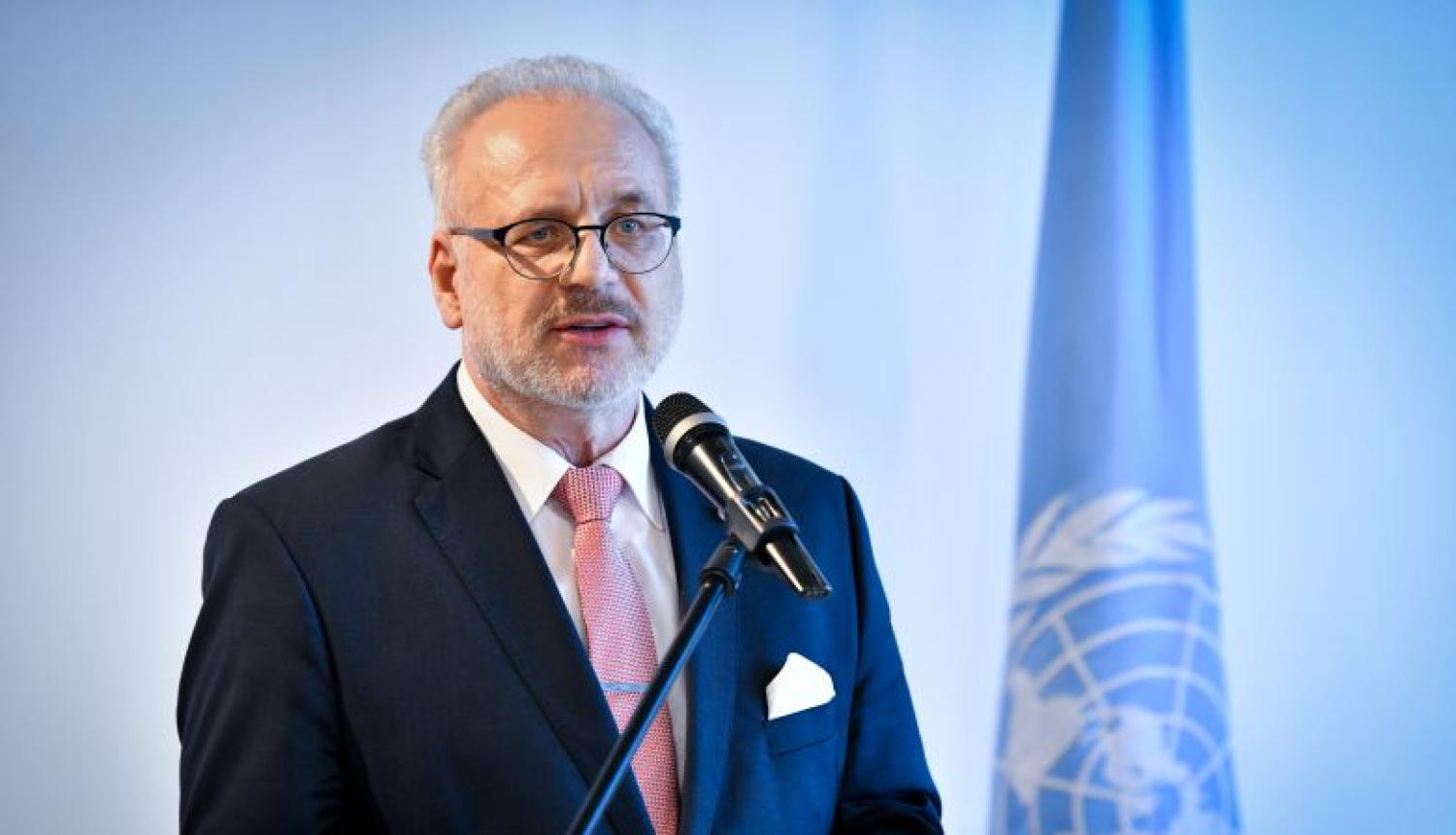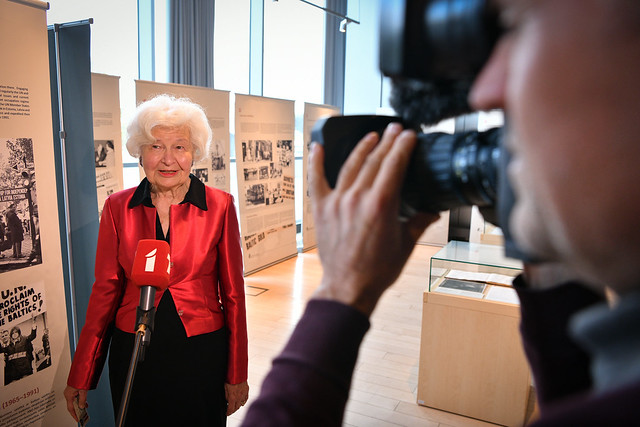Honourable Minister,
Excellences,
Ladies and gentlemen,
Today we are opening the exhibition that symbolizes the unity and tenacity of Baltic nations. When the UN Charter was opened for signature at the closing of San Francisco conference in June of 1945, Latvia was not among the countries that signed it. Our country was occupied and erased from the world map. And boats full of refugees were leaving the shores of Kurzeme for Gotland.
Refugees were scattered all over the world by the war. Some ended up settling down in New York where the UN headquarters are located. Baltic Appeal to the United Nations, or BATUN as we know it in English, a grassroots organisation uniting Baltic people in exile, was founded in February of 1966. Mission of this organisation was to remind the world of the fate of Baltic nations and need to prevent gross violations of international legal standards by appealing to the United Nations. In a way this organisation did what we call public diplomacy today. There was no such term back then. There are, of course, many civic diplomacy movements and organisations operating around the world today, which means that diplomacy is strongly people-cantered. It is not some special field where only insiders operate. It is a system that relies of public opinion. And BATUN became the voice of the Baltics.
We all know what happened not so long ago. Soviet Union collapsed in 1991, and less than a month later the UN Security Council was ready to vote on accession of Baltic countries to the organisation. One of the observers following the proceedings was Charge d’Affairs and Chief of Latvia’s diplomatic mission in the US, Anatols Dinbergs. He was Latvia’s representative in Washington since 1941 and came to the US in 1938 to serve as diplomat. He also served as the head of diplomatic and consular service of the Republic of Latvia since 1970. This is an interesting story of a Latvian diplomat ending his career in a restored republic after representing it for 50 years of occupation. He became the first ambassador of Latvia to the UN right after we were admitted to the organisation. His colleagues, Ernst Jaakson of Estonia and Stasis Lozoraitis Jr. of Lithuania, also watched the 1991 meeting. Both of them had been ambassadors of their countries before the World War II and kept representing it through the five decades of occupation to finally pass their duties over to their successors. History had gone the full circle.
The exhibition that we are opening today is a symbol of unity and tenacity of Baltic nations. The same unity and tenacity that we demonstrated during the Baltic Way. The same unity and tenacity that will never be overshadowed by minor economic disputes or healthy competition against one another. In the eyes of the world, we are a kind of a trinity, and it is good for us because our interests are very much aligned.
Exhibition is a testimony of our ability to self-organise and work tirelessly for years to achieve our ultimate goals. Even if they seem unreachable in given circumstances. In 1970, it must have felt like utopian dream to ever imagine Latvia back among the UN members. Determination required to achieve big things is a quality we will need in 2025 when we will submit our candidacy for a two-year non-permanent membership on the UN Security Council. Our membership on the key institution of the United Nations will conclude the first round of Baltic representation on the UN Security Council. I think that is the best way to pay tribute to all members of the BATUN, and we have one of its founders with us today, who spared no time or effort to keep fighting for Latvia’s return to international community throughout the darkest moments of our occupation.
I would also like to underline that Latvia has quite ambitious objectives for its membership on the UN Security Council. I believe that we as a modern fast growing European nation could help solve not only various European level problems, but also deliver on the global agenda. Because current international order is based on strong support for multilateralism, a principle we have always backed. We have always supported human rights and stood by gender equality. We support environmental protection, European Green Deal and fight against negative consequences of climate change. These are global challenges, and we have good ideas, the know-how and commitment required to help solve them. Number of issues that cannot be solved at either national or European level, and require global response, is only increasing. That is exactly why we want to be on the UN Security Council.
By the way, this exhibition also shows that modern technologies are a great tool, but you can also mobilise people without them. Everything depends on our intelligence, passion and ingenuity. That is one of the key messages to our young digital-age generation.
Dear friends and colleagues,
This exhibition brings Latvia into its third decade in the United Nations. At a time when the world is rapidly changing and multilateral cooperation is being challenged more than ever, we – the small countries – need to become more vocal and deliver more efficiently on the global agenda. Let me reiterate, we need multilateralism more than ever as the UN celebrates its 75th anniversary. We need it to promote peace and security in the world. Without it, we would definitely have more and much powerful conflicts. But Latvia is ready to help solve these global challenges.
I would like to conclude by thanking Dzintra Bungs and others for giving this exhibition to us!





